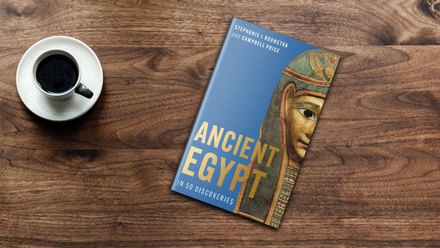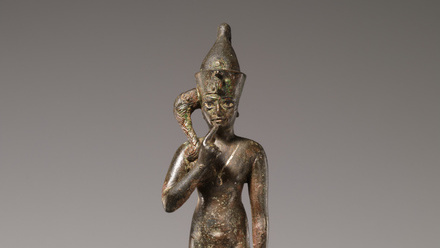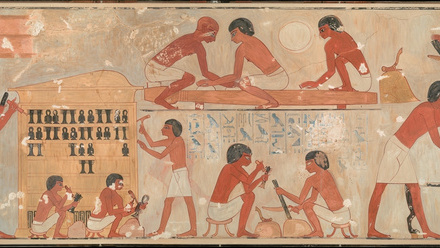The Amarna Stone Village
The Stone Village is a workers’ settlement located in a shallow valley in the desert to the east of the Main City at Amarna, around 20 minutes’ walk south-east from the Workmen’s Village. The survey and excavation of the Stone Village was undertaken during 2005-9 directed by Anna Stevens, when nine trenches were opened across the site which span likely settlement areas, burials, a quarry, rubbish deposits and peripheral structures that may be connected with the policing of the area. While the precise function of the Stone Village remains uncertain, the two most likely hypotheses are that the site was home to a community of labourers who worked on the quarrying of the Royal Tomb and perhaps also non-royal tombs at Amarna, and/or that the site played a role in provisioning and supporting desert-based workforces, including through the supply of food and water. For the latter, parallels have been drawn with the so-called ‘Workmen’s Huts’ on the plateau at Deir el-Medina.
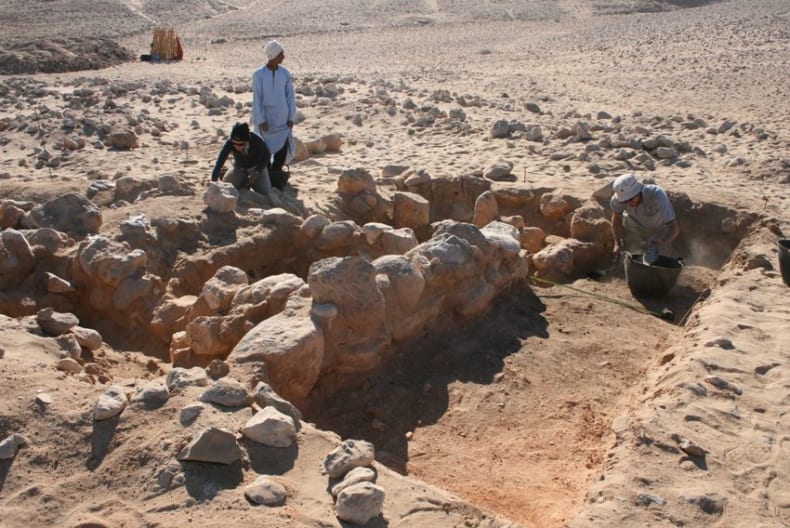
Trench 4 at the Stone Village during excavations (image: Anna Stevens)
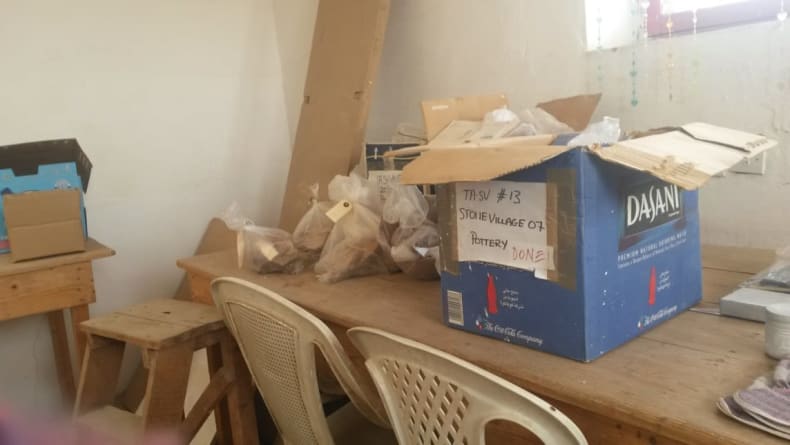
One of many boxes of Stone Village ceramic sherds to be checked and documented as part of the Project
This study of the pottery from the excavated trenches aims to build a clearer picture of the function of the Stone Village and shed further light on the spatial distribution of types, fabrics and ceramic technologies across Amarna. Jointly, the rich contextual data of the Stone Village pottery, and the fact that it is securely dated, also provides an opportunity for ceramic research beyond dating alone: a chance to use ceramics to explore themes of industry, trade and exchange across Amarna and beyond, and social themes including status, community identity and non-elite experience. The issue of trade and exchange of goods including food and water across Amarna, particularly between the Stone Village, the Workmen’s Village, and the Main Site, is also a key research theme for this project.
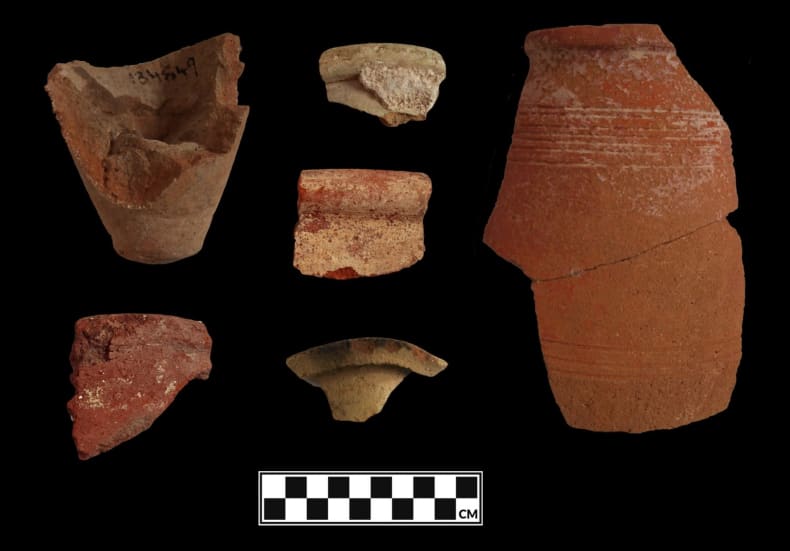
Selection of Nile silt sherds (including zir-sherds) and imports
As in the main Amarna ceramic corpus, the Stone Village assemblage comprises a majority of Nile silt sherds, with a smaller percentage of sherds from marl clay and imported vessels in the form of Canaanite and Oasis amphorae. Blue-painted Nile silt and, less commonly, marl sherds occur in relatively few numbers, mainly from carinated bowls and jars. The relatively low percentage of fine, decorated sherds, compared to the vast numbers of coarseware sherds from more utilitarian-type vessels, could also support the idea that the Stone Village was largely functional in outlook. Initial observations suggest that the Stone Village assemblage presents a distinctive signature: an abundance of Nile silt hole-mouthed jars and thick-rimmed Nile silt water jars (zirs) can be observed. Following the completion of the documentation of the ceramic assemblage during a final 2-week season in the field at Amarna in April 2018, work has now begun on the statistical analysis and characterisation of the assemblage in preparation for publication.
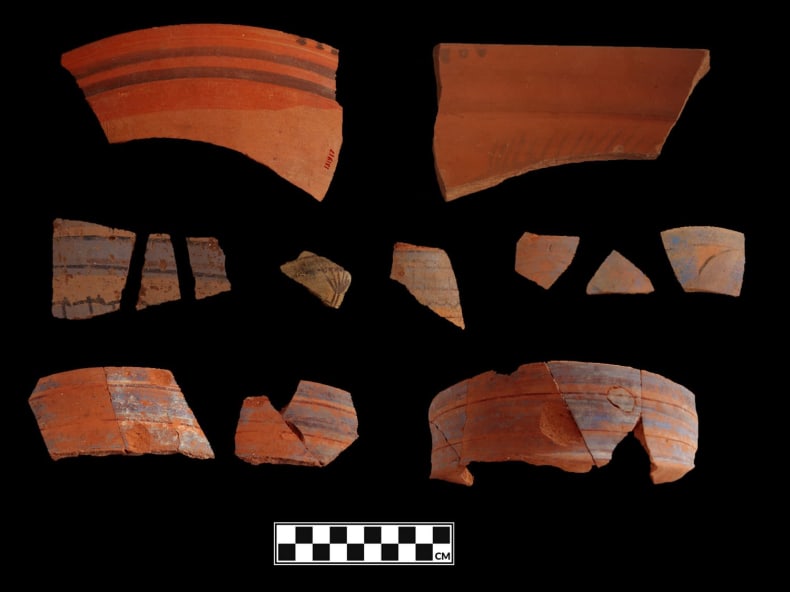
Selection of finewares including blue-painted sherds
Further Reading
Garnett, A., (2018), ‘The Stone Village Ceramic Assemblage’, in B. Kemp, ‘Tell el-Amarna, Spring 2017’, Journal of Egyptian Archaeology 102: 4.
Garnett, A., (2016), ‘Pottery from the Stone Village’, in. B. Kemp, ‘Tell el-Amarna, 2014-15’, Journal of Egyptian Archaeology 101: 35.
Garnett, A., (2016) ‘The Amarna Stone Village: Understanding a New Kingdom Worker’s Community through its Pottery Assemblage’, Egyptian Archaeology 49: 16-19.
Stevens, A., (2012), Akhenaten’s Workers: The Amarna Stone Village Survey, 2005-9. Volume 1: The Survey, Excavations and Architecture, EES Excavation Memoir 100, London: Egypt Exploration Society and Amarna Trust.
Stevens, A., (2012), Akhenaten’s Workers: The Amarna Stone Village Survey, 2005-9. Volume 2: The Faunal and Botanical Remains, and Objects, EES Excavation Memoir 101, London: Egypt Exploration Society and Amarna Trust.
Stevens, A., (2011), ‘The Amarna Stone Village survey and life on the urban periphery in New Kingdom Egypt’, Journal of Field Archaeology 36: 100–18.

